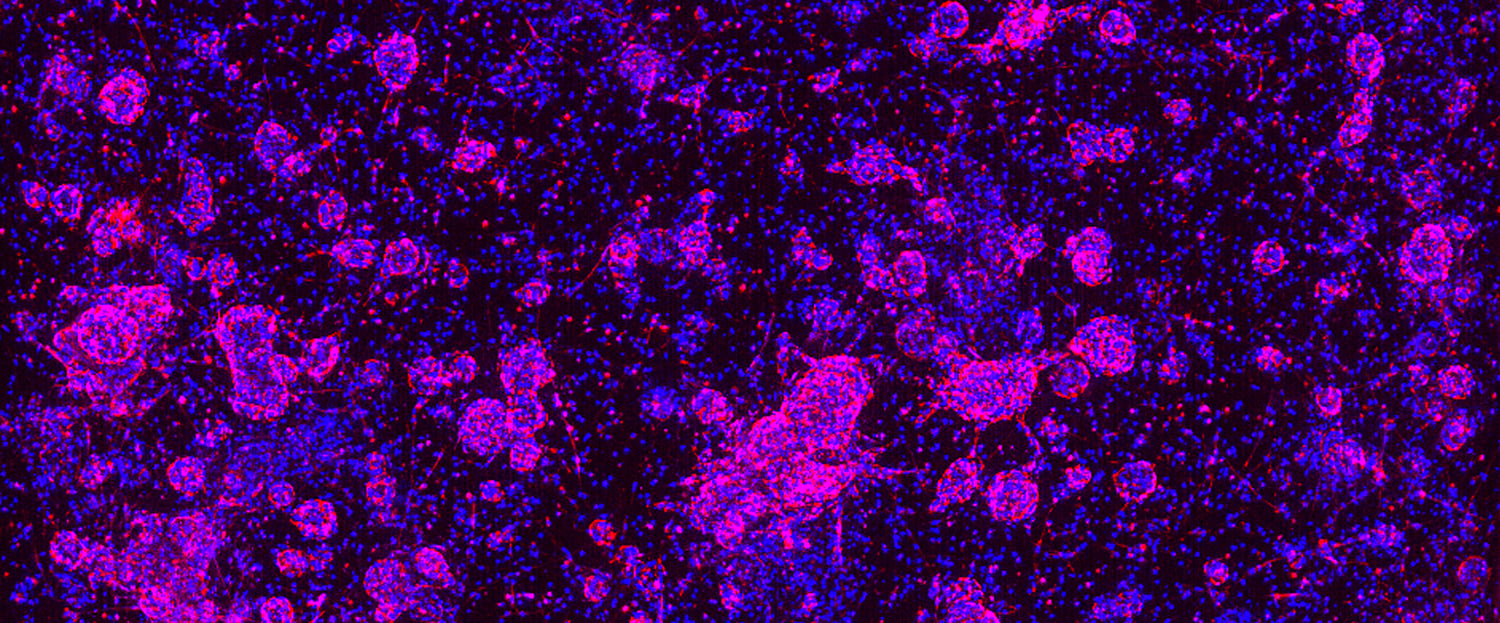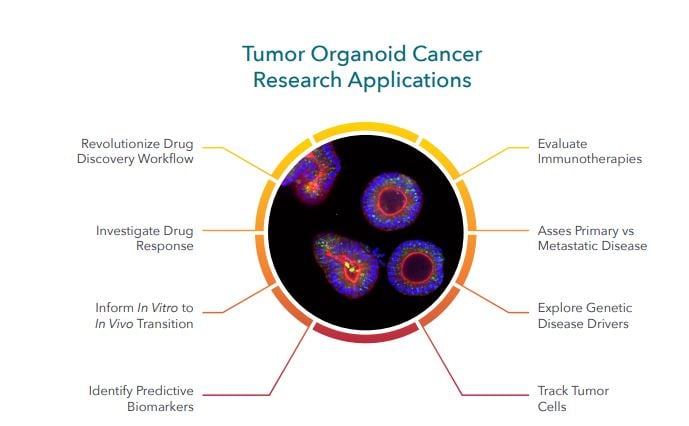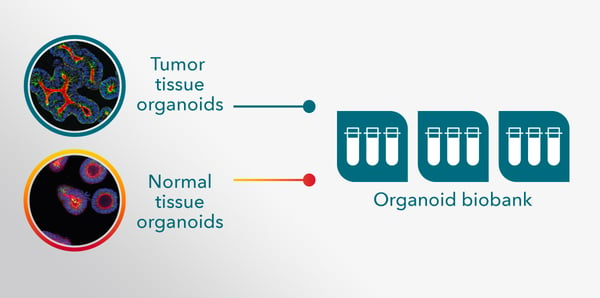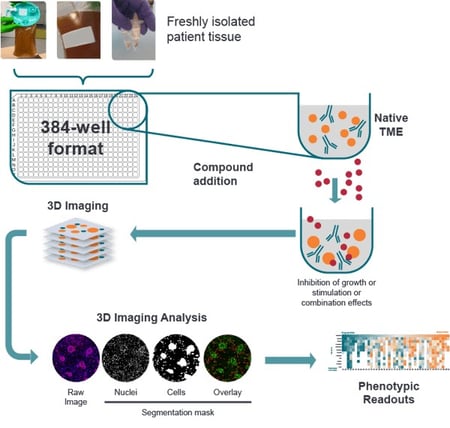Reliable Alternatives for Drug Discovery: Questions and Answers

In 2022, the FDA Modernization Act 2.0 removed the mandate for animal testing in drug development. Now, in a landmark April 2025 update, the FDA has announced plans to phase out animal testing requirements for monoclonal antibodies and other therapies — shifting the focus toward more effective, human-relevant methods and embracing the 3Rs of animal research (replace, reduce, refine).
“This initiative marks a paradigm shift in drug evaluation… we can get safer treatments to patients faster and more reliably, while also reducing R&D costs and drug prices.” – FDA Commissioner Martin A. Makary, April 10, 2025
In this blog, we answer 10 key questions about the alternative technologies gaining traction under this new regulatory landscape — including in vitro organoids and ex vivo patient tissue platforms.
1. How does the FDA’s 2025 roadmap impact drug development?
The FDA is now encouraging the use of more effective, human-relevant methods to replace animal testing in preclinical safety studies. The roadmap’s initial focus starts with monoclonal antibody toxicity testing and the suggestion of scientifically validated New Approach Methodologies (NAMs) such as in silico tools or computational-based models and in vitro human-based systems such as organs-on-chips and organoid testing in laboratory settings. These human-relevant platforms not only promise to reduce reliance on animal models, but also improve drug safety and accelerate the drug approval process, reducing overall time and cost to market.
“The use of organoid and cell-based platforms should help speed up the drug development process.” – FDA, April 10, 2025
2. What are the benefits of using alternative technologies?
There are many key benefits of using NAMs instead of traditional animal models in oncology drug development including shorter development timelines, lower R&D costs, and potential for improved prediction of clinical outcomes as well as supporting the 3Rs. In addition, the use of NAMs may qualify for streamlined regulatory review for drug developers, as noted in the FDA roadmap.
3. What are in vitro and ex vivo models, and how do they support development?
Human-relevant in vitro and ex vivo systems use patient-derived cells and tissues to model disease, toxicity, and efficacy. Unlike traditional 2D cell lines or generic 3D cultures, these models better represent clinical diversity and complexity, helping researchers identify lead compounds and predictive biomarkers to de-risk assets earlier.
4. What are organoids and how are they used in development?
Organoids are 3D cultures derived from stem cells within normal or diseased tissue from patients, that can self-organize, renew and differentiate to mimic the structure and function of organs. They offer a translational tool to study drug safety and efficacy — including matched normal/tumor comparisons for mAb off-target profiling or normal liver, heart or gut organoids for toxicity assessment.

5. What makes patient-derived organoids unique?
Patient-derived organoids preserve the genetic, epigenetic, and disease-specific features of original tissue due to resident stem cells present in the original tissue and in subsequent passages for both normal and tumor tissues. This also enables them to be cryopreserved and resuscitated, retaining their genetic features and 3D structures so they can be scaled and biobanked for continuous use, making them ideal preclinical models for research. They enable higher-throughput screening in formats such as 384-well plates and can inform both small and large molecule programs. Because of the complexity of 3D structures, high content imaging (HCI) can be applied to add significant insights into the drug response, such mechanism of action, resistance mechanism or potential biomarker discovery, in a more cost-effective and clinically relevant context.
6. How are organoids applied in oncology?
Organoids created directly from tumors provide high-fidelity platforms for screening, target validation, and combination analysis. Their patient relevance helps align preclinical results more closely with expected clinical outcomes. Each organoid represents a patient thus large biobanks of organoid models can capture patient diversity, different tumor types, grades and subtypes as well as heterogeneity. Co-culturing with immune and stromal cells extends their application to immuno-oncology and TME modelling. Organoids are unique personalized tumor avatars that faithfully preserve the patient’s unique tumor biology in 3D and are revolutionizing oncology with fast, ethical and scalable research options.
7. What other fields use organoid technology?
Because organoids can replicate the structure and function of real human tissues, they’re being used across disciplines to model disease, test drugs, and even explore developmental biology. Organoids are increasingly used in regenerative medicine, developmental biology, neurology, inflammation, infectious diseases, and toxicology, serving as models that reflect true human biology and response.
8. What are PDXO-PDX platforms and how are they applied?
PDXOs are tumor organoids derived from patient-derived xenografts (PDXs), preserving tumor architecture and clinical heterogeneity. Crown Bioscience has developed >500 matched PDXO-PDX models across 22 cancer types — providing matched in vitro:in vivo systems for alignment across translational studies, and providing a unique opportunity to further embrace the 3Rs and refine pharmacological studies, which is also mentioned in the FDA roadmap.

9. What are EVPT platforms?
Ex Vivo Patient Tissue platforms use fresh patient samples that retain the full tumor microenvironment complexity and heterogeneity. These enable testing of drug response on both cancer and immune cells in the most patient-relevant translational model system supporting 3D phenotypic analysis for more nuanced understanding of therapeutic impact. Although limited in scalability and lifespan, these ex vivo systems are unique innovative alternatives to animal studies that lack autologous human TME.

10. How do integrated solutions de-risk and advance drug development?
Integrated solutions is a rational holistic approach to address complex problems in drug discovery bringing multidisciplinary approaches together to increase the efficiency and success of developing new drugs. Thus the integration and selection of appropriate of NAMs will increase efficiency and improve early decision making, and ultimately minimize the use of animals. Combining multiomic approaches with in vitro screens, organoid assays and EVPT profiling can provide vast datasets for bioinformatics. In silico approaches such as AI, ML and computational modelling should also be integrated to leverage the large existing data for safety, immunogenicity and PK which will also accelerate drug development. Collectively integrated approaches can supports better candidate selection and informs clinical strategy. At Crown Bioscience we have large biobanks of patient models across all stages of drug discovery with in vitro, ex vivo and in silico solutions to support the roadmap for mAbs and other drugs.
Conclusion
The FDA's recent shift marks a new chapter in drug development. As AI models, organoids, and ex vivo systems become regulatory-supported tools, Crown Bioscience is proud to offer validated, patient-relevant models that align with this future.
“It also means an added margin of safety, since human-based test systems may better predict real-world outcomes.” – FDA, 2025
Click here to explore our cutting-edge organoid services and unlock a whole new world of research possibilities.

